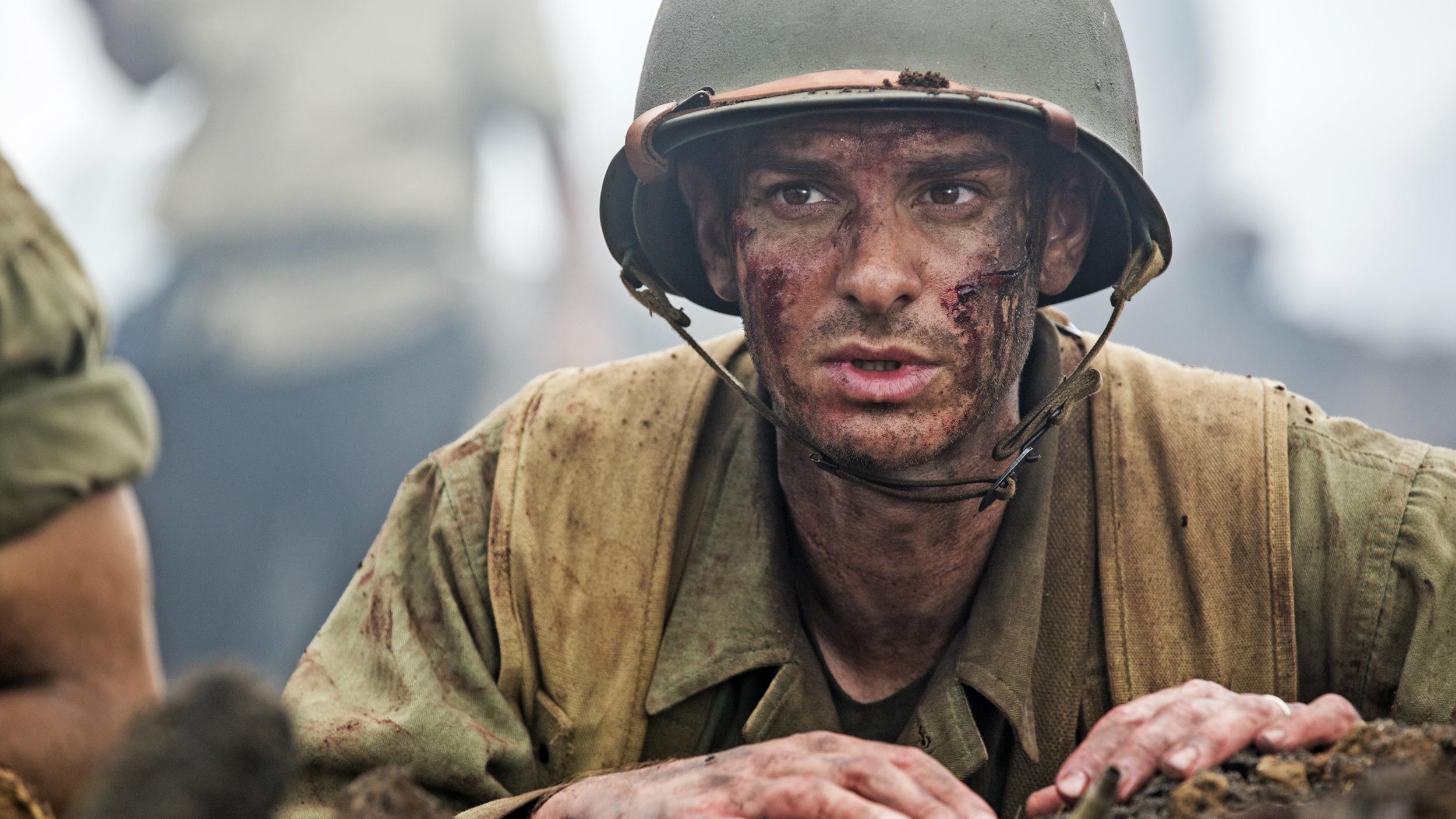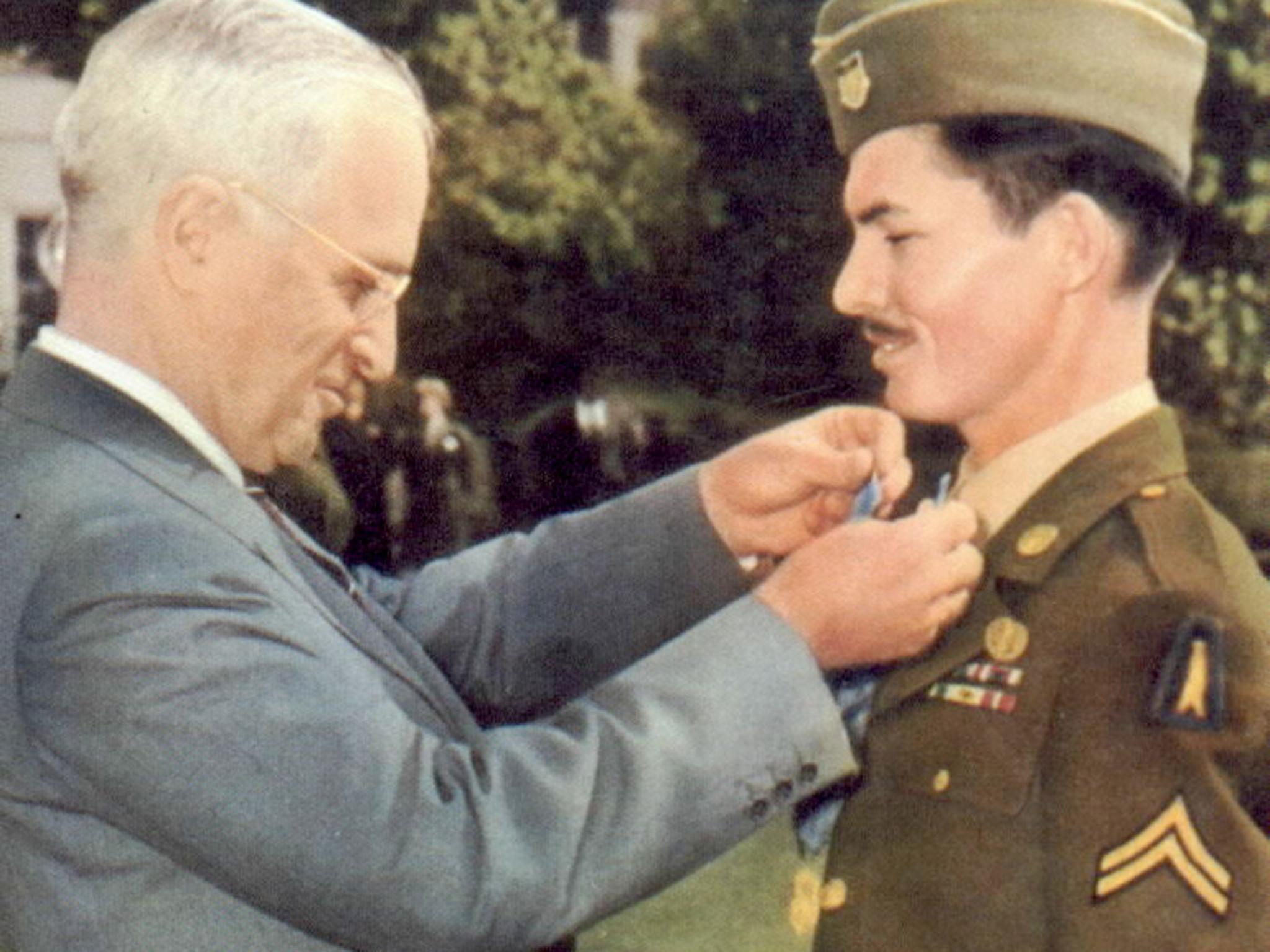Hacksaw Ridge: The men who went to war without firing a single bullet
Mel Gibson’s latest movie explores the history of Desmond Doss, one of three conscientious objectors to have won the US Medal of Honour

Your support helps us to tell the story
From reproductive rights to climate change to Big Tech, The Independent is on the ground when the story is developing. Whether it's investigating the financials of Elon Musk's pro-Trump PAC or producing our latest documentary, 'The A Word', which shines a light on the American women fighting for reproductive rights, we know how important it is to parse out the facts from the messaging.
At such a critical moment in US history, we need reporters on the ground. Your donation allows us to keep sending journalists to speak to both sides of the story.
The Independent is trusted by Americans across the entire political spectrum. And unlike many other quality news outlets, we choose not to lock Americans out of our reporting and analysis with paywalls. We believe quality journalism should be available to everyone, paid for by those who can afford it.
Your support makes all the difference.Three conscientious objectors have been awarded the Medal of Honour, the United States of America's highest military honour: three men who have been distinguished by their country for saving countless lives without firing a single bullet. One of them, Desmond Doss, is the subject of a new film, Hacksaw Ridge. Directed by Mel Gibson, Andrew Garfield (now Bafta-nominated for his role) plays Doss in a cinematic tribute to his incredible bravery in the face of a hail of death, saving 75 lives during the Battle of Okinawa.
During the Second World War, the US allowed conscientious objectors to serve in noncombatant military roles; with most working as medics within the army, allowing them to serve without wielding a weapon. Doss was such an individual; a Seventh-day Adventist drafted into the military in April 1942 and given the status of conscientious objector, enrolling as a medic in the 77th Infantry Division.
Doss faced harassment from his fellow soldiers, with his commanding officer attempting to initiate a Section-8 discharge (used when a serviceman is judged mentally unfit for service); though Doss refused: “I’d be a very poor Christian if I accepted a discharge implying that I was mentally ‘off’ because of my religion,” he said.
He first entered into the midst of combat in the summer of 1944, serving on both Guam and Leyte in the Philippines, and receiving the Bronze Star. Hacksaw Ridge, however, focuses on the events which took place when his unit landed on Okinawa. After Doss’s prayers, the 77th managed to almost miraculously capture the intimidating, 400ft Maeda Escarpment without a single death and only one minor injury. When a photographer arrived at the scene to capture the moment, asking how the feat was pulled off, the soldiers answered: “Doss prayed!”
However, things would take a dark turn for the unit in the coming month. On 5 May, the Japanese launched a counterattack, driving the Americans off the Escarpment; leaving stranded behind a known 75 wounded soldiers.

But Private Doss remained. Amongst the constant threat of enemy fire, he tended to the wounded and carried them, one by one, to the edge of the ridge; lowering them down on a rope-supported litter, tied with the double bowline knots he had learned as a young man. He returned unscathed that day, engaging in additional rescue efforts over the next two weeks, eventually being wounded by a grenade that embedded him with shrapnel, though he carried on alone for a further five hours with his injuries.
His Medal of Honour citation – presented to him by President Harry S Truman on 12 October 1945 – credits him with having saved the lives of all 75 men that day.
Two conscientious objectors would later receive the same honour during the Vietnam War, Thomas W Bennett and Joseph G LaPointe Jr; both, like Doss, held religious convictions which posed a moral crisis in the face of their call to military service – choosing also to serve as medics on the field. Bennett and LaPointe, however, did not survive their experiences.
Bennett’s platoon was ambushed in the midst of the thick, triple-canopy jungle; everyone dived for cover, except Bennett, who rushed to aid the injured. Under near-constant assault, he aided and comforted his wounded comrades over the next day or so; before being shot as he jumped up to dart the 30 feet to an injured platoon, choosing to risk exposing himself to heavy rifle fire.

Watch Apple TV+ free for 7 days
New subscribers only. £8.99/mo. after free trial. Plan auto-renews until cancelled

Watch Apple TV+ free for 7 days
New subscribers only. £8.99/mo. after free trial. Plan auto-renews until cancelled
Joseph G LaPointe was a medical aidman attached to the 101st Airborn Division; his patrol coming foul of an enemy bunker while assisting with a combat helicopter assault mission. Hearing the call for aid, LaPointe crawled through enemy fire – in plain view of the bunker – to assist two wounded comrades, shielding them with his own body.
Repeatedly wounded and knocked down, each time LaPointe would return to his position and continue to administer aid to the two soldiers while shielding them with his body. All three were killed by an exploding enemy grenade before LaPointe could stabilise them and evacuate them to safety.
Both Bennett and LaPointe were awarded their Medal of Honours posthumously, in 1970 and 1971 respectively. Doss, Bennett, and LaPointe may have found their place in the historical records; but it’s up to us to keep their memory, and the memory of their actions, alive.
‘Hacksaw Ridge’ is in UK cinemas from 27 January
Join our commenting forum
Join thought-provoking conversations, follow other Independent readers and see their replies
Comments